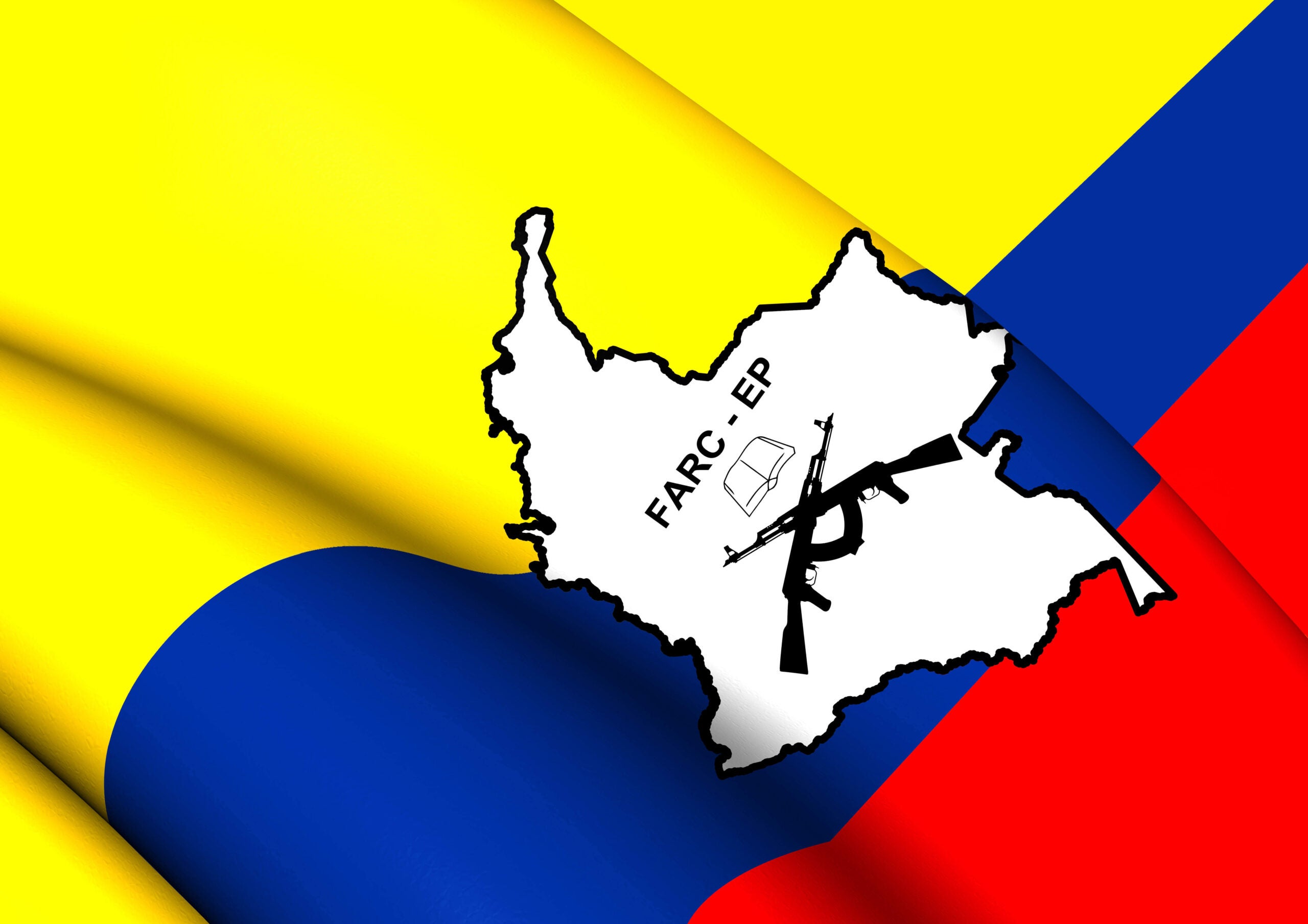
In the small town of Mesetas in the centre of Colombia, a final handover was made.
President Juan Manuel Santos and the head of the Revolutionary Armed Forces of Colombia (FARC) Rodrigo Londoño, better known as Timochenko, looked on as UN Head of Mission in Colombia Jean Arnault confirmed the receipt of 7,132 individual weapons; mostly pistols and semi-automatic rifles.
The weapons belonged to FARC, the Marxist guerrilla army that waged one side of a brutal civil war beginning in 1964.
Sparked at the height of the Cold War, the conflict grew out of tensions over inequality and a response to US-backed anti-communist repression. Eventually it retrenched into a low-level conflict, with the two main rebel groups FARC and the National Liberation Army (ELN) claiming to be fighting for the underclass while the government justified reprisals as necessary to maintaining stability.
But now the conflict between the government and FARC is over. An historic cease-fire agreement was signed last year and as FARC hands over its trove of guns it officially ceases to be an armed group.
They intend to remodel as a political party. Their words, to paraphrase the group’s leader, are now the only weapons they need. The actual weapons, after being disarmed, were sealed in a shipping container to remain under the watch of the UN.
How well do you really know your competitors?
Access the most comprehensive Company Profiles on the market, powered by GlobalData. Save hours of research. Gain competitive edge.

Thank you!
Your download email will arrive shortly
Not ready to buy yet? Download a free sample
We are confident about the unique quality of our Company Profiles. However, we want you to make the most beneficial decision for your business, so we offer a free sample that you can download by submitting the below form
By GlobalDataIn a speech at Mesetas, Santos said:
Without arms, without violence, we are no longer a people facing off with each other.
The conflict claimed 260,000 lives over its more than a half-century.
Santos is now working on a similar ceasefire agreement with the ELN and it is hoped the country can soon settle into a peace it has not been used to since The Beatles released “Twist and shout.”
Hidden behind the death toll, however is a much larger humanitarian disaster.
In 2016 alone, 171,000 Colombians were displaced by conflict and violence. They join the over 7m already displaced internally (that is to say those who haven’t crossed a border), making Colombians overall the most internally displaced population on earth. More than Syria.
Widespread abuses, including the recruitment of minors, sexual violence, anti-personnel mines, extortion and the targeting of human rights defenders also force the flight of many Colombians.
So reads a report from the Internal Displacement Monitoring Centre in Geneva.
Internal displacement often lurks in the shadows of the refugee crisis. The majority of protections afforded under the 1951 UN convention on Refugees apply only to people who have crossed a border and therefore fall into an international jurisdiction.
For those that don’t cross a border it can be very hard for organisations to recognise, monitor and offer support to them.
IDPs often live a life more challenging than those impoverished for other reasons. The IDMC cites a 2010 survey by the civil society-led monitoring commission on internal displacement showing that “94 per cent of IDPs were living below the poverty line and 77 per cent in extreme poverty.” On top of that, IDPs can be subjected to discrimination, disenfranchisement, sexual violence and exploitation. They have limited access to basic necessities and often live in unofficial camps or marginalised neighbourhoods.
Internal displacement is a much more common phenomenon than most people realise (for every one refugee in the world there are two IDPs, or internally displace persons) and in a country such as Colombia, with a land area of 1,142000 square kilometres, there is more than enough room for a terrorised group to flee far from their home but still be in the same country.
In the case of Colombia, with both the militants and government at various times complicit in violence aimed at civilians, those who have had to flee often found themselves still under the power of those from whom they fled, whether it be gangs, the government or rebel factions controlling large territories.
Militant factions, government agents and gangs have a much easier time finding them and without the protection of the UN under 1951 there is often nobody to whom these people can appeal.
The other difficulty in tracking, and therefore helping, IDPs comes from the tenuous designation of someone “displaced”. At what point do they become settled; after a month in a new city, a year?
NGOs work effectively by identifying large groups of a given class and tailoring wide-brush aid solutions to those classes. When the people who need your help are living half-settled lives around the country, virtually indistinguishable from “local” homeless and impoverished, there are few effective ways to deliver the badly needed support.
Finally, governments hostile to outside meddling have a much easier time keeping the do-gooders out if the affected class are the country’s own citizens. “This is our problem to deal with,” they can say, without pressure from foreign countries whose people have crossed over.
Violence is not the only factor driving internal displacement, either. On top of the 170,000 displaced in 2016 from the conflict and drug war a further 31,000 were forced from their homes by environmental disasters such as floods, storms, earthquakes and landslides.
Illegal mining in Colombia also plays a large role in displacement, with people being forced off their land by armed militias, on behalf of companies who have purchased rights to mine their land without proper consultation.
Most often those militias belong to either FARC or ELN, and the two groups between them have accounted for more than two thirds of all the displacement within the country.
Adrián Calvo Valderrama, Senior Monitoring Coordinator at the IDMC told Verdict FARC’s de-militarisation and now evloution to political party has made things worse.
The void of power left behind by the most important armed actor in the country has triggered a struggle among other armed actors. Neo-paramilitary groups (demobilized paramilitaries) such as the AGC, the ELN and dissident former FARC members present in over 400 municipalities have been fighting and threatening the population.
Though the peace deal was signed at the end of 2016 the violence continues, forcing more people from their homes.
Last year there were 47 mass displacement events, according to the IDMC. We’re only halfway through 2017 and there have already been 42.






